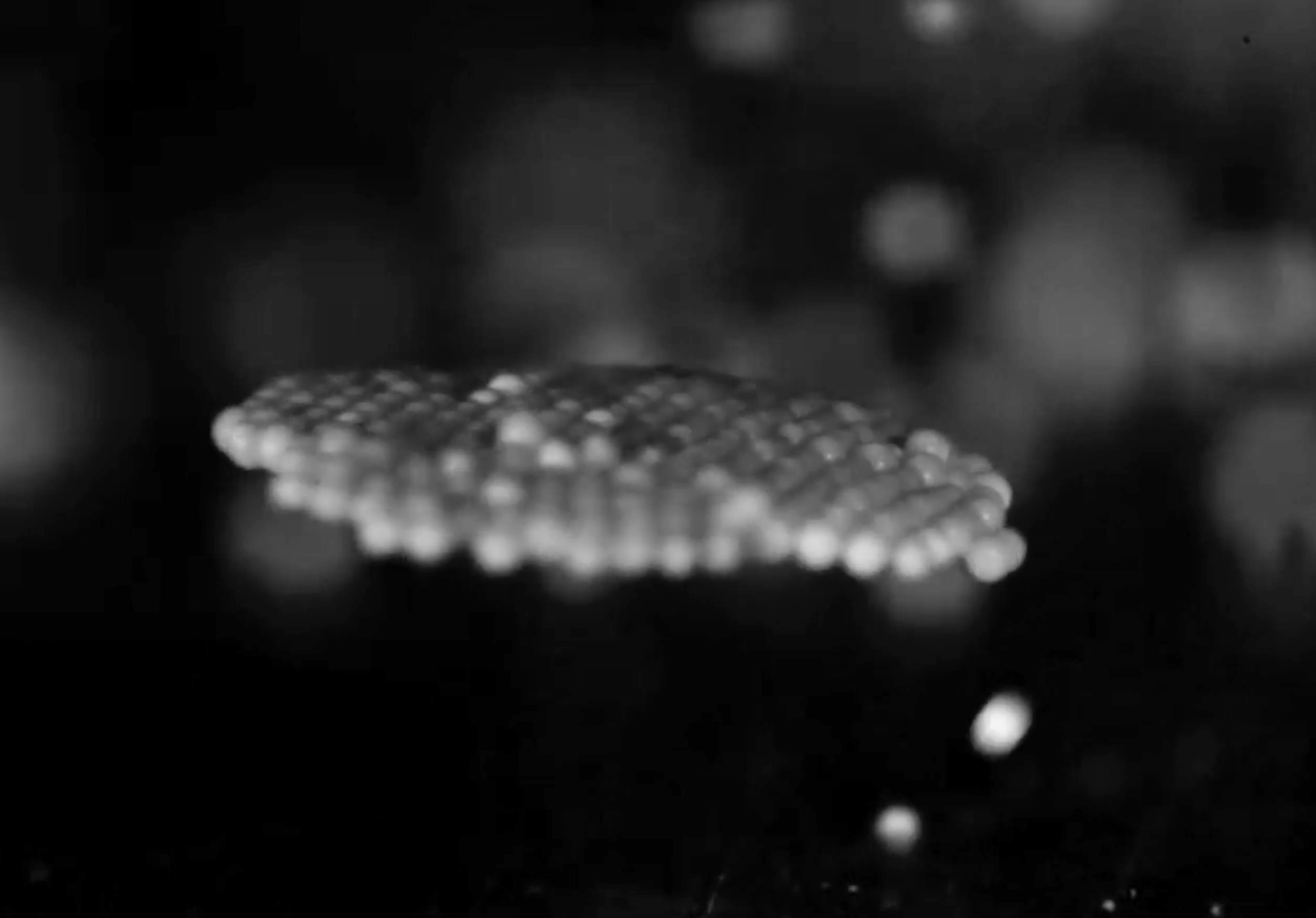These levitating beads can teach physicists about spinning celestial objects
Manipulated by sound waves, these floating particles can offer clues about the physics of asteroids and black holes.

Levitation might seem like a superpower out of science fiction. But unlike Doctor Strange, scientists don’t need spells to suspend and manipulate objects in midair. In a study published last week in Physical Review X, physicists at the University of Chicago and University of Bath described a way of harnessing the power of sound to make clumps of plastic particles float, spin, and break apart. Their findings could help us understand the physics of other rapidly-rotating entities—including black holes, atomic nuclei, and asteroids.
“Acoustic levitation is a really cool way to manipulate objects, because it’s literally using something very much like a loudspeaker,” says lead study author Melody Lim, an experimental soft matter physicist at UChicago.
Lim and her colleagues hoped to refine this sort of levitation so they could use it to move and manipulate objects without touching them. This has a myriad of potential applications: some physicists are even investigating acoustic levitation as a means of rearranging cells for the purpose of tissue engineering.
Lim and her team placed tiny round plastic particles—less than one millimeter in diameter each—inside a transparent box. To generate enough force to float and move them, they put a speaker inside the box that could generate standing waves—a type of a sound wave that is stationary. Lim likens it to the wave of a vibrating violin string.

(2022)
The waves caused the beads to bounce and amass together in suspension, forming a single layer of little particles in a circle. In this levitated configuration, the sound waves generate a weak attraction, or cohesive force, between particles—“you can think of it just like a kind of sticky glue that holds everything together,” Lim says. As Lim and the team tweaked the frequency of the sound coming out of the speaker, the circular clump would wobble like a raft on a rocky ocean before beginning to spin.
Imagine riding on a swinging carousel as it picks up speed. The faster it turns, the more centrifugal force you experience—which makes the swing you’re dangling in start to fan outward instead of hanging straight down. This is essentially what happens to the floating disc of particles, Lim explains. But in this case, there are no strings tethering the floaters together.
[Related: This lamp can levitate thanks to electromagnets]
As the sound waves are manipulated further, “it reaches a point where it’s rotating as fast as it can possibly go,” Lim says. “Then that pushing force is stronger than the sticky glue that’s binding the particles together, and so the whole thing has to change shape.”
At these high speeds, centrifugal force rips apart the clump of particles and stretches it out into a longer, skinnier blob, or even breaking into smaller chunks. Interestingly, the fragments eventually glom back together into a single circular disk.

(2022)
“What this experiment really is probing is, how much does [the spinning disc] hate having things on the outside versus having things on the inside?” says Lim. Similar to water droplets, the particles rather pull themselves into compact circles that reduce the surface area, she says. “It doesn’t really like having a long stretched out shape, because then you have many particles kind of sitting around on the outside, and it’s not very happy.”
Asteroids might undergo similar processes, Lim says. The ones located in the asteroid belt are essential clumps of rocks bound together by gravity and heated up by the sun. “One hypothesis is that the sun shines on one side of the asteroid, which means that that side is hotter,” Lim says. The heat causes the rocks facing the sun to spit out gas. “It’s like you just turned on a little gas thruster that’s attached only to one side of your asteroid,” she says, which gradually spins the asteroid.
[Related: What if the speed of Earth’s rotation suddenly got faster?]
Similar to the tiny particles in Lim’s experiment, the rotation gets faster and faster over time, potentially causing the structure to change shape. But asteroids’ massive size and slow simmer from the faraway sun makes the phenomenon difficult to study.
“Measurements of this effect for asteroids say that the time needed to double how fast this thing is spinning is on the order of 100,000 years,” Lim says. It would take a long time for rotational force to noticeably change an asteroid’s shape, she says.
The research group’s tiny acoustic levitation system could mimic the physics of those celestial bodies, as well as other spinning objects like black holes and atomic nuclei, to better unpack processes that would otherwise be challenging to study, says Lim. Beyond practical applications, Lim says, she was also mesmerized by the beauty of this phenomenon.
“I started realizing that when you have many levitating particles put together, they form these very visually interesting structures,” she says. “In the acoustic levitation device, they do all of this fascinating stuff, like spin and split and merge to make bigger droplets. It was really aesthetic.”
